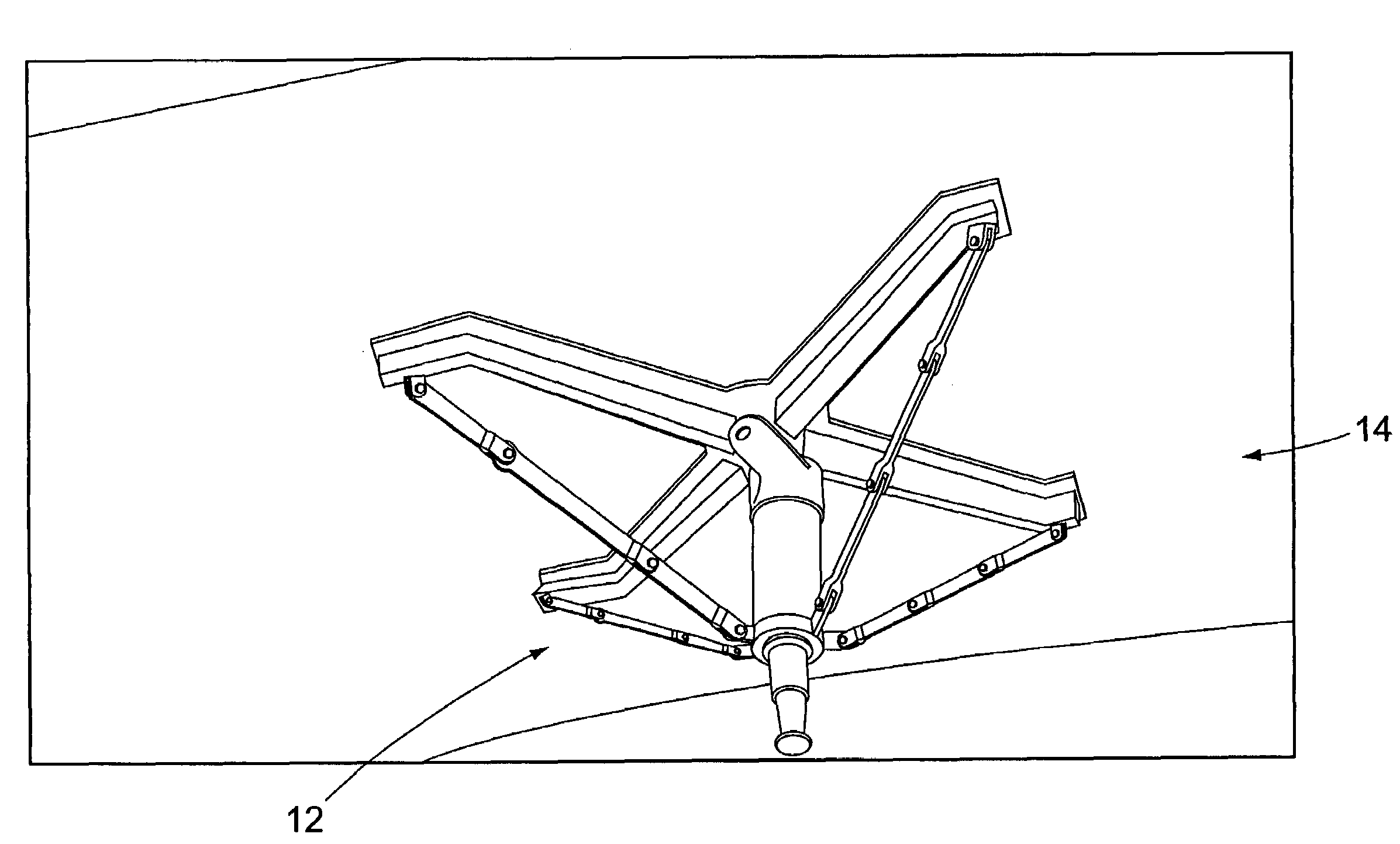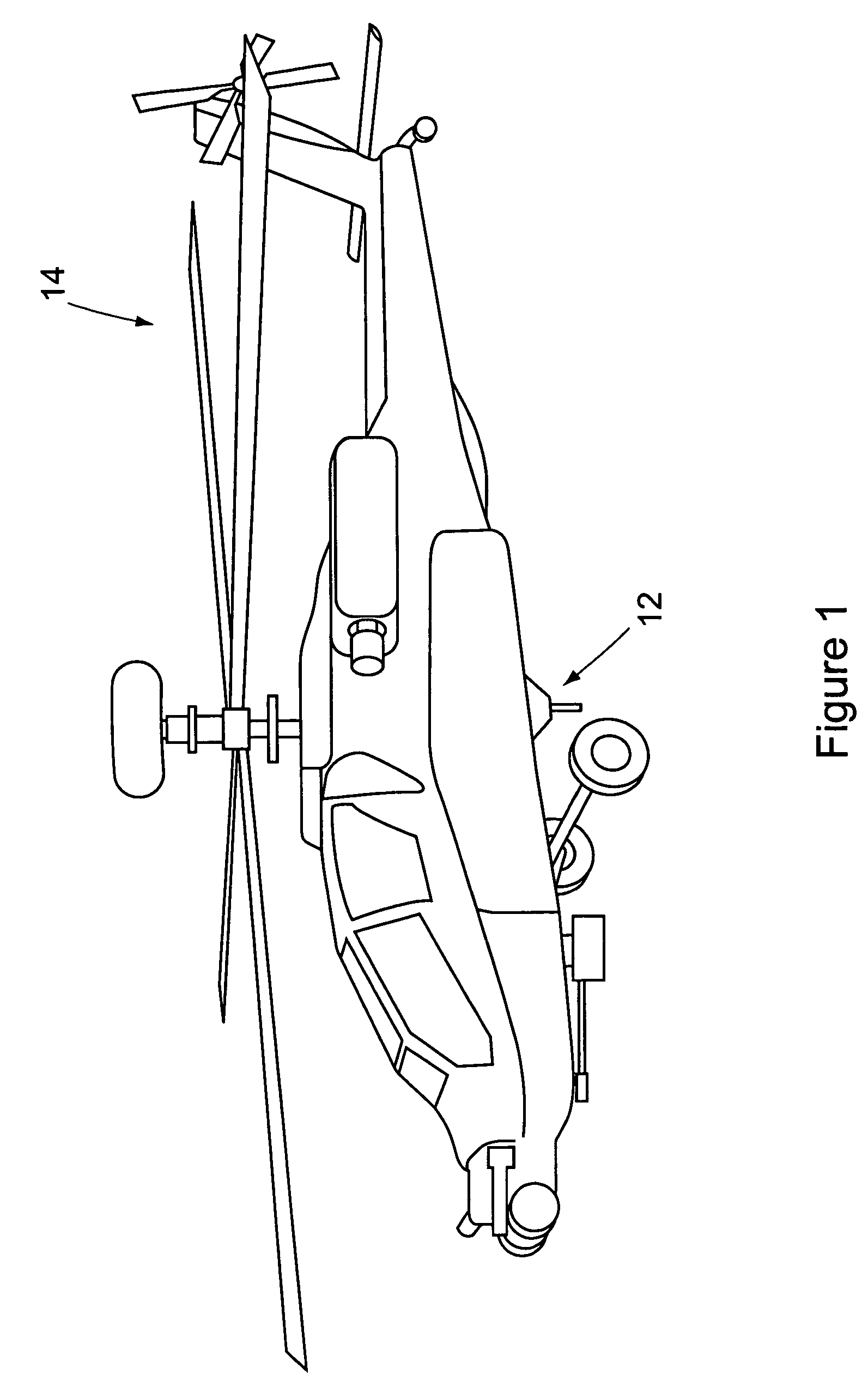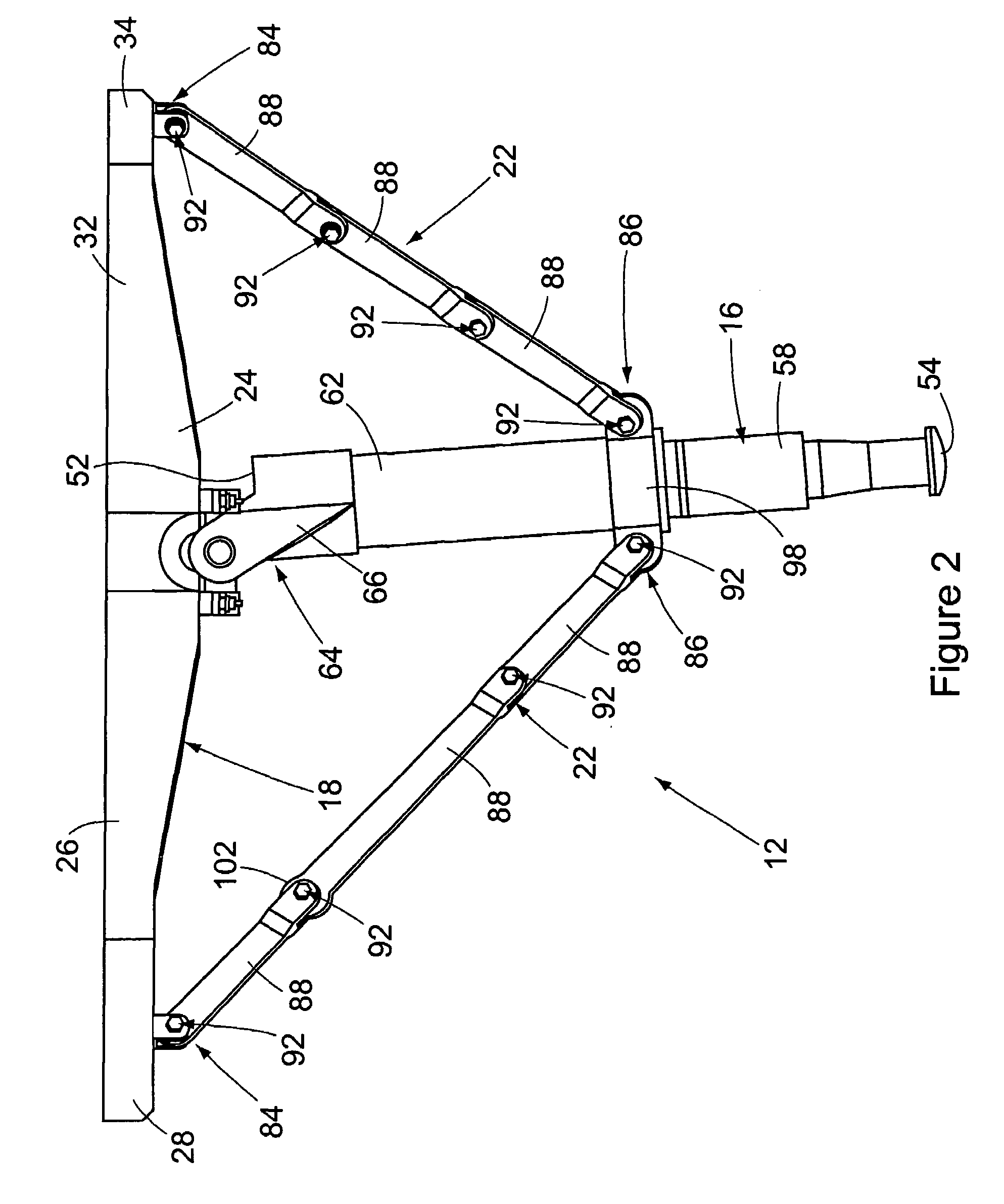Landing assist apparatus interface bulkhead and method of installation
a technology of landing assist and bulkhead, which is applied in the direction of anchoring installation, anchoring hook, transportation and packaging, etc., can solve the problems of specifically designed helicopters lacking other desirable features, aircraft/ship landing assist systems, etc., and achieve the effect of avoiding potentially catastrophic damage to helicopters
- Summary
- Abstract
- Description
- Claims
- Application Information
AI Technical Summary
Benefits of technology
Problems solved by technology
Method used
Image
Examples
Embodiment Construction
[0055]FIG. 1 shows the aircraft landing assist apparatus 12 of the disclosure employed on an aircraft 14. Specifically, FIG. 1 shows the apparatus 12 installed on the underside of a helicopter-type aircraft, for example an AH64 Apache helicopter. It should be understood that the particular type of aircraft 14 with which the apparatus 12 is shown in FIG. 1 is illustrative only. It is not intended that the apparatus 12 be limited to use with any one particular type of aircraft.
[0056]The apparatus 12 is specifically designed to be retrofit to existing helicopters that have not previously been designed for shipboard landings. In addition, on rough landing of the aircraft using the apparatus 12, the apparatus is designed to collapse in a controlled manner beneath the aircraft 14, thereby avoiding any damage to internal components of the aircraft such as an ammunition container and / or a fuel storage cell. Although an embodiment of the apparatus is retrofit to an existing aircraft, the app...
PUM
 Login to View More
Login to View More Abstract
Description
Claims
Application Information
 Login to View More
Login to View More - R&D
- Intellectual Property
- Life Sciences
- Materials
- Tech Scout
- Unparalleled Data Quality
- Higher Quality Content
- 60% Fewer Hallucinations
Browse by: Latest US Patents, China's latest patents, Technical Efficacy Thesaurus, Application Domain, Technology Topic, Popular Technical Reports.
© 2025 PatSnap. All rights reserved.Legal|Privacy policy|Modern Slavery Act Transparency Statement|Sitemap|About US| Contact US: help@patsnap.com



